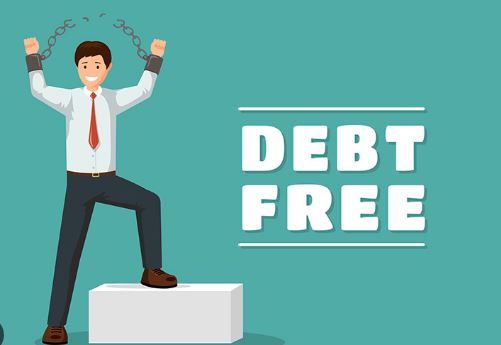In the complex world of finance and corporate management, one term that often captures the attention of executives and analysts alike is corporate debt restructuring. As businesses navigate the ebbs and flows of economic conditions, corporate debt restructuring emerges as a crucial tool to foster financial growth and ensure longevity.
This strategy involves a comprehensive approach to managing a company’s debt profile to achieve a more sustainable and profitable future.
This detailed exploration will delve into corporate debt restructuring, its working mechanisms, and its numerous benefits to a corporation’s financial health.
What Is Corporate Debt Restructuring?
Corporate debt restructuring is a strategic financial maneuver designed to help companies facing financial predicaments. It entails renegotiating the terms surrounding a firm’s existing debts to grant a much-needed respite from intense financial pressure. This can include a variety of adjustments, such as:
- Extending loan repayment periods allows the business more time to recover and generate cash flow.
- Reducing the applied interest rates to lower the debt service burden on the company.
- Converting outstanding debt into company equity which helps alleviate immediate cash requirements.
This process does not just put companies back on track; it also serves the interests of creditors who favor recovering a portion of their credits over a potential total loss in a bankruptcy situation.
Through this tactical reorganization of debt, businesses can redirect their focus towards principal operations and long-term plans, leading to rejuvenated financial growth.
Corporate debt restructuring is usually instigated when a company finds that its financial obligations surpass its ability to pay, which can lead to insolvency or bankruptcy proceedings. This is when the relevant parties come to the table to:
- Assess the severity of the financial distress.
- Make critical decisions on debt relief measures.
- Work out a plan for financial recovery in conjunction with creditors.
- A company could cut its monthly payments significantly by lengthening a loan term from 5 to 10 years, freeing up cash for operations.
- A reduction in interest rates from 10% to 5% could halve the interest paid over the life of a debt, saving the company millions.
- Converting debt to equity can immediately cleanse the balance sheet, boosting investor confidence and positioning the company for future capital raises.
Companies must understand and maneuver these strategic avenues with precision to fully capitalize on corporate debt restructuring. Not only does this help alleviate immediate financial strain, it also sets the stage for sustainable success and a promising future for all stakeholders involved.
How Does The Corporate Debt Restructuring Process Work?
Corporate debt restructuring starts with a comprehensive and clear-eyed view of the company’s monetary health. A precise inventory of debts, assets, cash flow, and operational efficiencies is critical to deciphering the degree of financial distress and charting a viable corrective course. Key steps include:
- In-depth financial auditing to establish a factual base for negotiations.
- Honest dialogue with creditors to renegotiate debt terms.
- Strategic planning with input from financial experts to propose a sound repayment strategy.
Engaging with stakeholders and balancing their interests is the cornerstone of a successful corporate debt restructuring project.
Once the company’s situation has been evaluated, starting discussions with creditors is usual. They may be willing to revise the interest rates, change the payment schedules, or sometimes even agree to a haircut on the principal amount due.
The goal is to create a debt repayment plan that appeases creditors and enables the company to maintain operational viability and eventually return to a growth trajectory.
- A company might reduce its total debt from $1 million to $800,000 through negotiations, making the remaining liability more manageable.
- Renegotiating a repayment schedule could stretch debt payments longer, easing the immediate financial burden on the company’s cash flow.
- Asset sales negotiated during restructuring can provide the liquidity necessary to deal with creditors.
Corporate debt restructuring is akin to steering a ship through a storm, where precise navigation can mean the difference between sinking and reaching calmer waters.
Successful implementation and unwavering monitoring of the restructuring plan are pivotal for any business’s hope to emerge resilient and financially stable.
Who Is Involved In The Corporate Debt Restructuring Process?
Many principal actors play their roles in the corporate debt restructuring stage. The leading ensemble includes:
The management team of the indebted company takes the lead in strategizing the restructuring process and liaising with other stakeholders.
Creditors and lenders, whose collaboration and agreement are paramount for the restructuring terms to be set and followed.
Financial advisors and consultants bring their technical insight to the negotiation table, guiding the company through the intricacies of financial rearrangement.
Regulators and legal representatives ensure that the operation adheres to the law and maintains regulatory compliance.
The interaction among these various stakeholders must be characterized by transparency and a willingness to find a middle ground. It is not just about negotiating terms but forging a path that allows the company to regain its footing and operate sustainably.
- The management team develops a restructuring plan emphasizing operational viability and compliance with legal requirements.
- Creditors agree to a 20% cut in the outstanding debt in exchange for equity in the company.
- Financial advisors orchestrating a debt refinancing strategy to reduce the interest rate burden on the company.
The intricate web of negotiations that constitutes corporate debt restructuring requires a deft touch and rigorous oversight from all parties involved. It is a concerted effort to shield the company from financial ruin and put it back on the upward trajectory of growth.
What Are The Benefits Of Corporate Debt Restructuring For A Company?
The advantages of corporate debt restructuring ripple through various domains of a company’s operation. Some of the prominent benefits are:
Significant cash flow improvements as the company enjoys reduced monthly outgoings and better fund allocation.
Bankruptcy aversion, preserving the company’s market standing and protecting investors’ interest.
A potential enhancement of debt conditions, including lower interest rates and debt-to-equity conversions, will help the company in the long haul.
Enhanced focus on core business efficiencies, potentiating profitability without the overhang of debt-induced distractions.
A bolstered image among creditors and markets is due to proactive measures signaling a commitment to long-term financial health.
By revisiting and re-organizing debt terms, a company finds relief in the present and lays the foundation for future efficiency and profitability. It is a holistic approach to financial well-being that addresses immediate liquidity concerns and draws out a blueprint for persistent growth.
- A company could experience an immediate improvement in operating capital, allowing it to invest in core business areas that promise the best returns.
- A firm might avoid bankruptcy proceedings through restructuring, which can be costly and damage long-term business relationships.
- Renegotiating convertible debt allows a company to exchange some of its liabilities for equity, thus removing immediate repayment pressures.
The pursuit of corporate debt restructuring can be a strategic game-changer for businesses aiming not just to survive but thrive. Mitigating the immediate debt burden and streamlining operations prepares companies for a future of financial stability and growth.
Can Corporate Debt Restructuring Affect The Company’s Credit Rating?
Indeed, corporate debt restructuring often incurs a dip in the company’s credit rating initially. This is a reflexive response from rating agencies to the perceived risk a company poses when renegotiating its debt. Key points to note include:
A typical, immediate effect is lowering credit ratings, showcasing the potential risk associated with the company’s debt profile.
Though initially seen as a negative adjustment, improved financial operations and debt management can lead to a credit rating rebound.
The actual impact on ratings hinges on the specifics of the restructuring: is the interest rate lowered, the repayment schedule elongated, or debt swapped for equity?
A company must anticipate and manage these credit score fluctuations while remaining focused on its strategic long-term financial goals.
A credit rating plunge can be disquieting, but it can pave the way for a credit score turnaround if the restructuring improves cash flows and debt management. The endgame is to reestablish a company’s creditworthiness, which comprises a solid balance sheet and a sustainable business model.
- A telecom company’s credit rating might be temporarily downgraded post-restructuring, but as its financial health revitalizes, the rating climbs back up.
- A retail giant accepting a short-term rating hit might rebound quicker if its debt gets converted to equity through successful negotiations.
Even though credit rating agencies might react unfavourably to restructuring actions in the short term, the potential for long-term financial improvement remains a persuasive narrative.
Companies must navigate the temporary credit stigma with the assurance that proper restructuring can significantly bolster their financial and credit status over time.
Corporate Debt Restructuring Examples
Corporate debt restructuring comes to life through real-world scenarios where companies have walked this challenging path. These examples include:
Renegotiating loan terms to sustain a business on the brink of default.
The transformation of General Motors (GM) in 2009 is a seminal example of government aid and strategic bankruptcy measures resetting the company’s debt liabilities.
WorldCom’s metamorphosis into MCI Inc. post-2002, after Chapter 11 bankruptcy, presented another case of recovery through carefully managed debt restructuring.
Airlines like American Airlines in 2011 have demonstrated this flexibility, balancing their books by cutting costs and rescheduling debt.
Sprint Nextel’s 2009 debt-for-equity swap showcased a fundamental instrument in the corporate debt restructuring toolkit, where debt forgiveness is exchanged for a stake in the company.
These instances underscore successful debt restructuring endeavors that not only salvaged respective companies but also offered them a new lease on financial life. Strategic shuffling and recalibration of debts against the canvas of market realities and corporate valuations have been pivotal in their transformation stories.
- GM’s government bailout and subsequent reorganization gave the company the necessary breather and means to start afresh.
- American Airlines was able to cut costs and restructure debt, reflecting the importance of operational adjustments alongside financial negotiations.
- Sprint Nextel opting for a debt-equity swap reduced the strain on its balance sheets and gave creditors confidence in company revival plans.
The path of corporate debt restructuring, while daunting, can lead businesses through recovery and resurgence. These examples serve as powerful testimonials to the tenacity and resourcefulness companies can muster when faced with financial turmoil.
Corporate Debt Restructuring Pros And Cons.
Corporate debt restructuring is a double-edged sword; it offers undeniable benefits but also brings certain disadvantages that companies must weigh:
- It is a crucial support mechanism for distressed businesses, extending a lifeline through revamped debt arrangements.
- Long-term creditworthiness can emerge from this process, priming firms for future investment and more attractive financing conditions.
- However, this can mean surrendering some control, as outside parties involved in restructuring may influence strategic decisions.
- The complexity and resource intensity of the process can disrupt normal operations and accrue substantial costs.
- There is also the stigma of financial instability a restructuring label could impart, potentially affecting confidence among customers, investors, and business partners.
While corporate debt restructuring can be transformative, business leaders must navigate these challenges with strategic foresight and operational astuteness. The trade-offs between immediate survival and long-term control and reputation warrant careful consideration.
- Successfully lowering interest rates through debt restructuring can save a company from insolvency while allowing it to maintain operations.
- After restructuring, companies could find themselves subject to terms prioritising repayment over growth or innovation.
- A drawn-out restructuring could lead to sunk costs in negotiations, distracting from the company’s core business functions.
The decision to embrace corporate debt restructuring should come with a strategic vision that looks beyond the horizon of immediate financial relief. It involves a delicate balance of short-term concessions for long-term prosperity and stability.
Debt Restructuring For Individuals
Individuals, much like corporations, can also engage in debt restructuring to preserve their financial health. The key elements include:
- Revisiting loan agreements to create a more manageable repayment roadmap.
- Strategies may entail lower interest rates, extended loan durations, or in some cases, debt forgiveness.
- It helps individuals sidestep the eventuality of bankruptcy, shielding them from negative credit implications.
- Appropriate financial advisement or debt counseling can prove invaluable when negotiating with lenders.
The aim is to recalibrate personal finance obligations to avoid drowning in debt and maintain a sound credit standing.
Individual debt restructuring is a contemplative process requiring negotiation skills and financial literacy. It provides a breathing space for individuals to regroup and sustainably address their debts, often with professional guidance to navigate the intricacies of this financial pivot.
- Renegotiating a housing loan to extend its term from 15 to 30 years can significantly lower monthly repayments for an individual.
- Reducing the interest rate on credit card debt from 20% to 10% can substantially ease the financial burden on a person, allowing them to break free from the debt cycle faster.
- Sometimes, a portion of the debt might be forgiven in exchange for a solid, albeit longer, repayment commitment, offering immediate relief to the borrower.
For individuals, the journey of debt restructuring can be a path to financial rejuvenation. Done judiciously, it rekindles the hope for a stable financial future devoid of unmanageable debt.
Final Insights on Navigating Financial Stability
Corporate debt restructuring is an intricate financial strategy requiring stakeholders’ meticulous approach and involvement.
While the primary objective is to alleviate immediate economic duress, the end game is to streamline a company’s or individual’s debt profile, forging a path toward sustained fiscal prosperity.
Through careful planning, negotiation, and execution, restructuring can revitalise not just the balance sheets but the entire operational philosophy of an entity, enabling it to turn around dire situations and chart a course for future growth.
As businesses and individuals worldwide contend with fluctuating economic conditions, corporate debt restructuring represents a beacon of tactical resourcefulness.
It reframes the narrative from one of distress to one of deliberate, strategic growth. The rewards, as illustrated in countless real-world examples, speak volumes about the importance and effectiveness of such manoeuvres.






